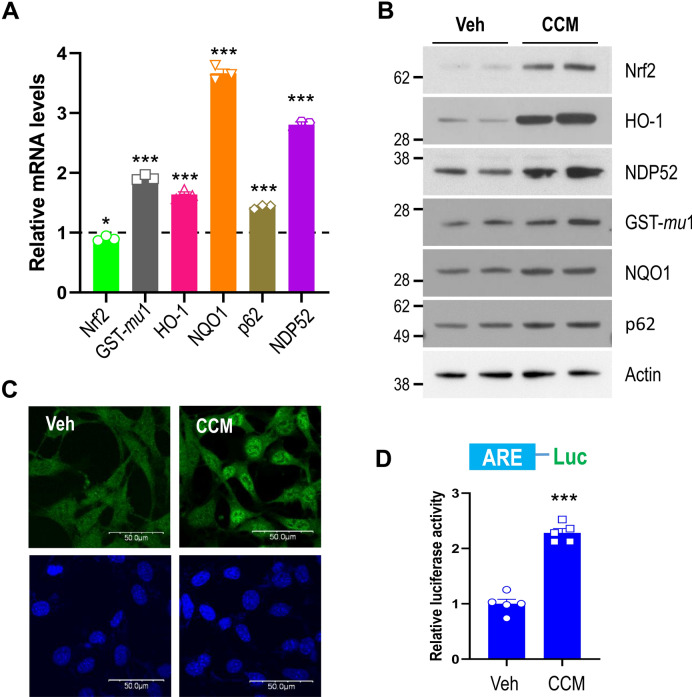Figure 1.
Curcumin activates Nrf2 signaling. (A) Mouse cortical cells were treated with either DMSO or 10 μM curcumin for 12 h. The mRNA levels of Nrf2-response genes were analyzed by qRT-PCR as described in the Methods. The bar graph shows the relative mRNA level of genes in the curcumin-treated group compared to the DMSO group. (B) The protein levels of Nrf2-response genes in the cells were analyzed by immunoblotting using anti-Nrf2, HO-1, NDP52, GST-mu1, NQO1, p62, and actin antibodies, respectively. Full blots are provided in Supplementary Fig. S11. (C) Mouse cortical cells were treated with either DMSO (Veh) or 10 μM curcumin (CCM) for 6 h. The cells were fixed with 4% paraformaldehyde and immunostained using anti-Nrf2 antibody. Fluorescence signals were observed using a confocal laser scanning microscope. (D) Mouse cortical cells were transiently transfected with the ARE-Luc reporter and TK-Renilla plasmids. After treatment with either DMSO (Veh) or 10 μM curcumin (CCM) for 12 h, the cells were assayed for the luciferase activity. Data shown are mean ± S.E. of three independent experiments and were analyzed using the Student’s t-test. (*p < 0.05, ***p < 0.001).

